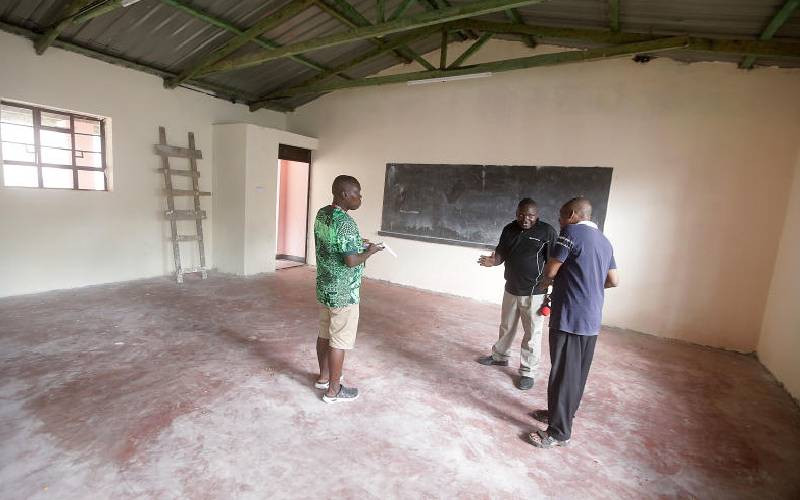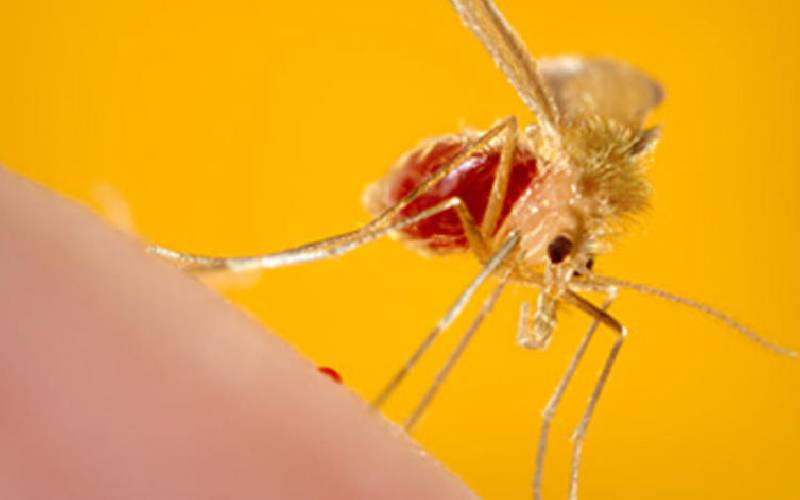As the Maize Lethal Necrosis Disease (MLN) spreads across the country, the government, including research institutions, are working to understand how it came into Kenya.
In this effort, the government has set up a task force to carry out a survey in all maize growing areas across the country and recommend the best ways of controlling the disease.
The task force is working with the Ministry of Agriculture, Livestock and Fisheries (MoALF), Kenya Plant Health Inspectorate Service (Kephis), the Kenya Agricultural and Livestock Research Organisation (Karlo), the University of Nairobi, The International Centre for Maize Improvement and the International Centre of Insect Physiology and Ecology (Icipe) to map the extent of the disease and come up with ways to combat it. Although pests are known to be the major carriers of viruses causing plant diseases, there is no conclusive study that has so far shown that they are responsible for the rapid spread of MLN.
Although scientists are looking for ways to control it, long-term solutions are needed to protect the future of maize, a staple food in Kenya.
Are infected commercial seeds the source of disease?
As researchers search for answers, there are different theories being floated. For example, there are two interesting studies, which can perhaps shed some light on likely causes of the rapid spread of the disease.
The studies — Effects of Seed Quality on the Proportion of Seed Transmission for Sugarcane Mosaic Virus in Maize (by Li, XF Wang and GH Zhou), and Seed Transmission of Maize Chlorotic Mottle Virus (by Jensen SG and David S Wysong, et al) — show that the quality of seed can contribute to the spread of MLN. The disease is caused by a combination of both Maize Chlorotic Mottle Virus (MCMV) and Sugarcane Mosaic Virus (SCMV).
According to the study on transmission of MCMV through seeds, four seed samples of maize containing 11,000 seeds supplied by two seed companies had 17 infected seeds. One sample with 3,000 seeds had one infected seed. However, three seed samples with 8,000 seeds were found to have 16 infected seeds. The remaining 21 seed samples with 31,000 seeds from other seed companies were free of the virus.
To find out the potential of the diseased seed in each seed sample to pass on the disease wherever they were planted, a simple calculation was done to determine the percentage of diseased seeds that were likely to pass on the disease. In the seed samples free of the viruses the seed transmission rate was 0.0 per cent, while among the seed samples with MCMV, the least was in the first seed sample that is 1 out of 3,000 seeds indicating a seed transmission rate of 0.03 per cent (1 divided by 3,000 and multiplied by 100) and the highest was in the second seed lot at 0.33 per cent (10 infected seeds divided by 3,000 and multiplied by 100).
One acre of maize has approximately 42,000 seeds. Therefore, to get the number of seeds per acre that are likely to be infected and have the potential to pass on the disease, we have to go by what Jensen and his group found out. In the case of the first seed sample case scenario, 13 seeds per acre are likely to be infected ( 0.03 multiplied by 42,000 and divided by 100). In the second seed lot case scenario with 0.33 per cent transmission, 139 seeds per acre are likely to be infected (0.33 multiplied by 42,000 seeds and divided by 100).
Seed with ten per cent rate of MLN infection certified
Several technical staff in a number of seed companies in Kitale and Nairobi interviewed last year indicated that seed farms with up to 10 per cent infestation levels were being certified by the Kenya Plant Health Inspectorate Service (Kephis) to sell the maize as seed. This essentially means that in nominal seed crop yield of 1.7 tonnes per hectare, 170kg of seeds are at the risk of carrying some seeds with the virus. At a 1,000 seed weight of 240gm, this 170kg of seeds are likely to have 0.7 million seeds and at a maximum seed transmission rate of 0.33 per cent nearly 2310 seeds from among seeds produced in one hectare are likely to be infected and have the ability to spread the disease where such seed is planted. It is important to note that the seed transmission rates of 0 – 0.33 per cent discussed above are for MCMV one of the two viruses responsible for MLN disease.
Seed transmission of SCMV virus
The second study that focused on transmission of SCMV virus showed that for every 42,000 seeds per acre, approximately 966 to 1,638 seeds could be infected and can transmit the disease where the seed is planted. This means that nearly 27,300 seeds from one hectare are likely to be infected and pass the disease if used as seed.
The distribution and marketing of these seeds needs to be carefully monitored and controlled to prevent fast spread of the disease in the farms.
Insects pests spread the viruses
The number of infected seeds per acre could look small compared to the large number of seeds sown in an acre. However, in a scenario where these spreads in the whole farm if there are pests like thrips and aphids, which act as carriers, this can cause major damage to the entire maize field.
Stay informed. Subscribe to our newsletter
In this regard, the level of disease infestation in the seed farms has to be revisited and it is therefore, recommended that more stringent measures put in place by Kephis to ensure only clean maize seed is certified and sold to farmers. Already Kephis has taken measures to reduce the possibility of seed to transmit the disease.
In a meeting with seed companies and other stakeholders held at the organisation’s headquaters on October 9, 2014, the regulatory authority agreed that all certified seed must not have any traces of the two viruses in future. All imported seed will not be certified if it has any traces of both MCMV and SCMV pathogens, the meeting resolved.
But the action by Kephis is tantamount to closing the door when the horse has already bolted. They have taken action too late because all the maize seed currently being sold to farmers was certified at ten per cent level of infection.
Some of the Kenyan seed companies distribute seeds across East Africa. So it is easy to imagine the damage caused if diseased seed is sold to farmers across the region. As the regulatory authority mandated to control the quality of seed in the country, Kephis should ensure that all maize seed it certifies is of the highest quality and does not contribute to spread of any diseases including MLN. The regulatory body should ensure that there is a high level of management in seed farms so that certified seed is not contaminated.
The writer is an editor with The Organic Farmer, a farmers’ magazine published by Icipe. The information carried in this article does not necessary reflect the views of Icipe.
 The Standard Group Plc is a
multi-media organization with investments in media platforms spanning newspaper
print operations, television, radio broadcasting, digital and online services. The
Standard Group is recognized as a leading multi-media house in Kenya with a key
influence in matters of national and international interest.
The Standard Group Plc is a
multi-media organization with investments in media platforms spanning newspaper
print operations, television, radio broadcasting, digital and online services. The
Standard Group is recognized as a leading multi-media house in Kenya with a key
influence in matters of national and international interest.
 The Standard Group Plc is a
multi-media organization with investments in media platforms spanning newspaper
print operations, television, radio broadcasting, digital and online services. The
Standard Group is recognized as a leading multi-media house in Kenya with a key
influence in matters of national and international interest.
The Standard Group Plc is a
multi-media organization with investments in media platforms spanning newspaper
print operations, television, radio broadcasting, digital and online services. The
Standard Group is recognized as a leading multi-media house in Kenya with a key
influence in matters of national and international interest.






